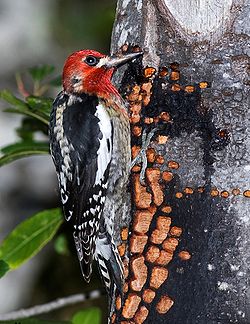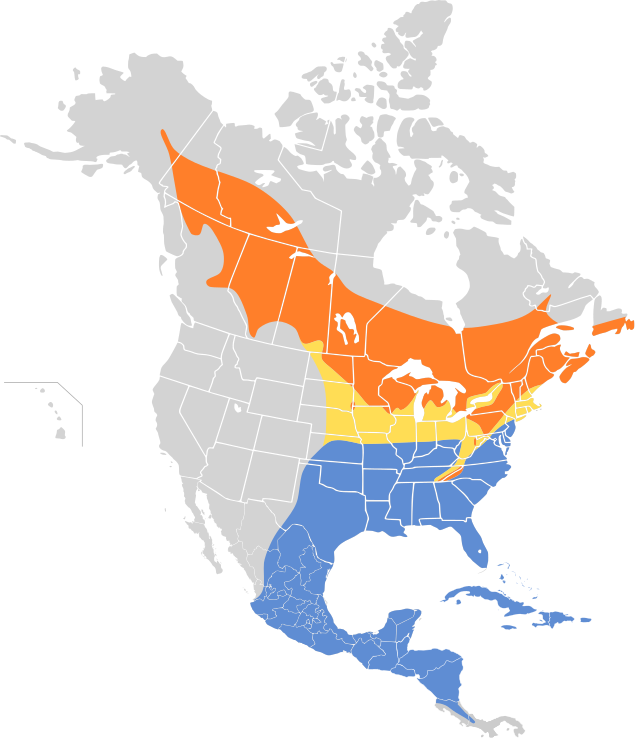Top Qs
Timeline
Chat
Perspective
Sapsucker
Genus of birds From Wikipedia, the free encyclopedia
Remove ads
The sapsuckers are species of North American woodpeckers in the genus Sphyrapicus.
Remove ads
Taxonomy and systematics
Summarize
Perspective
The genus Sphyrapicus was introduced in 1858 by the American naturalist Spencer Baird with the yellow-bellied sapsucker (Sphyrapicus varius) as the type species.[2] The genus name combines the Ancient Greek sphura meaning "hammer" and pikos meaning "woodpecker".[3] The genus is sister to the genus Melanerpes; both genera are members of the tribe Melanerpini in the woodpecker subfamily Picinae.[4]
There are four currently recognized species in the genus:[5]
Remove ads
Description
The members of this genus are slender birds with stiff tails and relatively long wings. Their typical pattern in flight is undulating, alternating between quick bursts of wing beats and short dips with wings tucked against the body.[citation needed]
Behavior

As their name implies, sapsuckers feed primarily on the sap of trees, moving among different tree and shrub species on a seasonal basis. Insects, especially those attracted to the sweet sap exuding from sap holes, are often captured and fed to the young during the breeding season. The most easily recognized sap holes are found in birch trees during the breeding season.[citation needed]
Because sapsuckers attack living trees, they are often considered a pest species.[6] Intensive feeding by sapsuckers is a cause of severe tree damage and mortality, with certain tree species more adversely affected by feeding than others. A USDA Forest Service study found that 67 percent of gray birch (Betula populifolia) trees damaged by yellow-bellied sapsuckers later died of their injuries.[7] This compares to a mortality of 51 percent for paper birch (Betula papyrifera), 40 percent for red maple (Acer rubrum), 3 percent for red spruce (Picea rubens), and 1 percent for hemlock (Tsuga canadensis).[7]
References
External links
Wikiwand - on
Seamless Wikipedia browsing. On steroids.
Remove ads










